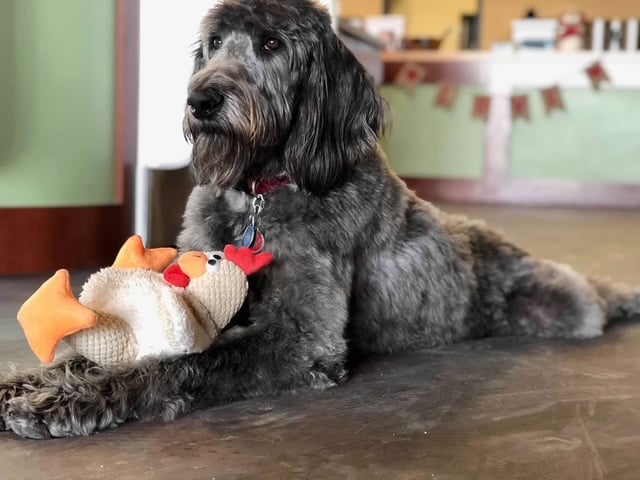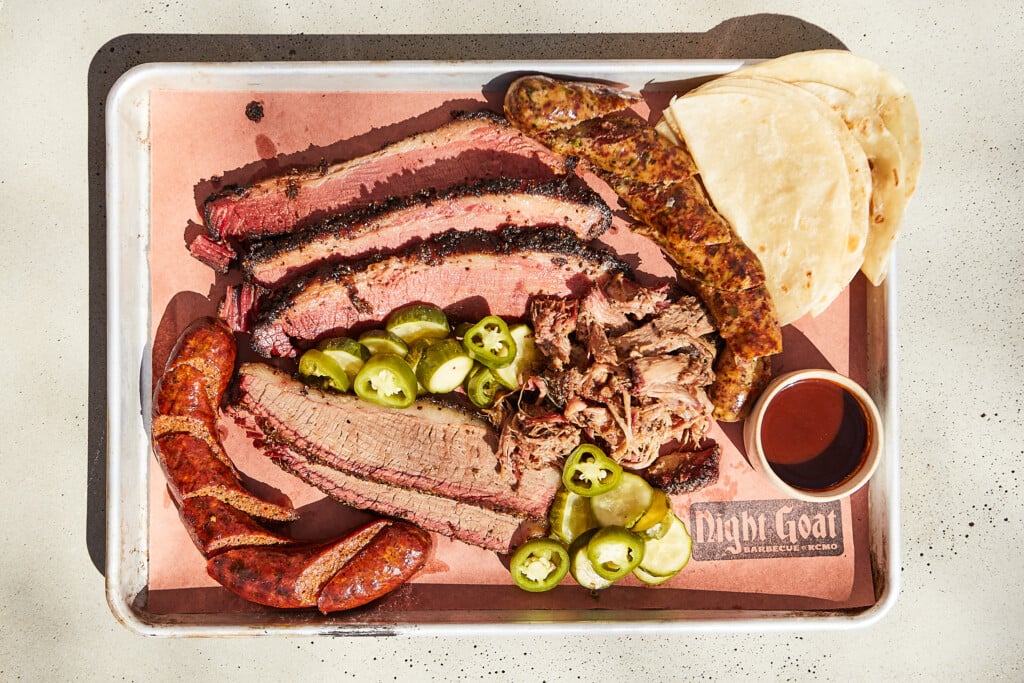The Flamingo at 50: A Lawrence strip club’s golden anniversary

Red and green lights flash as the exotic dancers make their way around the club. Normally, they’re in G-strings and 7-inch heels, but tonight is special. The ladies are clad in formal attire: a flapper dress dripping in fringe, a bedazzled gown, a blue lace dress worn at a college graduation.
It’s the 50th anniversary of the Flamingo Club, a strip club located off a gravel road on the outskirts of Lawrence. The squat green building, endearingly called the Bird, has been serving the community’s “topless needs since ‘69.” The actual year is up for debate; the topless part is not.

Wes Kabler is one of the owners of the Bird. Most days, you can find him walking around here in jeans and a stained Kansas Jayhawks jacket. Tonight, he wears slacks and a button-down. He bought the place in the 1960s, back when it was a supper club. A few years later, he turned it into a strip club and never looked back. Over the years, there’s been “good times and hard times,” he says. He reminds himself: “Don’t let the bastards get you down.”
The walls inside the Bird tell a partial history of the last five decades. Hanging on them is a flyer for the Lawrence St. Patrick’s Day Parade — Kabler and friends started the parade in 1988; the last stop is the Bird — as well as black-and-white photos, dozens of press passes and tickets, and newspaper clippings. There’s even a sports Emmy Award from the 1988 Winter Olympic Games. (In the 1970s, the Bird became a popular spot for some ABC sports reporters who would stop by when they were covering Royals, Chiefs, and Jayhawk games. Over the years, the ABC guys became close with Wes and started inviting him to sports events. He’s been to Super Bowls, World Series games, boxing matches, the Indy 500, even the Olympics.) One photograph shows a man with dark curly hair resting his arm around a laughing woman. She’s naked except for a thong and the paint covering her chest. He’s half-smiles, eyes shying away from the camera. That’s Kabler.

Onstage, a woman wearing metallic bottoms and nothing else flashes a smile at the crowd. Her body is petite, but hard. As she spins around the pole, you can catch a whirring glimpse of a Nike swoosh on her lower back.
Her name’s Paula. She began dancing at the Flamingo Club in the mid-2000s after a breakup. She liked the fast cash and flexible hours, but most of all she liked how empowered she felt while dancing. She’s bounced around — down to Texas and back — but she’s settled in here now, and says she can’t imagine doing anything else. It’d be too hard to walk away from the independence the job provides, too hard to leave her dancer friends, too hard to say goodbye to the Bird.
“The people that are running the show here actually have integrity, and I never see that anywhere,” Paula says, “especially in these places [strip clubs].”
Everyone’s got their reasons for sticking around. When Brianna was 7 years old, she watched Hurricane Charley rip through central Florida. The wind and rain tore down power lines and pulled shingles off roofs. She decided she wanted to study meteorology. But college was expensive, and working a part-time job was time-consuming. “I didn’t have time to do homework or study or even live life,” Brianna says.
She’d taken pole-dancing classes before; it made her feel sexy. So she started dancing after her junior year, at a different Lawrence strip club. But that place, she says, was full of uncaring managers and customers who degraded the dancers. So she and her friend Whiskey moved over to the Flamingo Club.
The extra money — and the extra time it afforded — was huge for Brianna. She graduated in May and credits dancing with helping her achieve that goal.

Whiskey’s different. To the outside world, she’s private about her life as a dancer. Few people know about Whiskey’s career, including her two sons (though she plans to tell them when they’re older). But inside the club, she doesn’t hide who she is. She has a boyfriend. She talks about her kids. She has a life. She doesn’t know what she plans to do after dancing, but she’s proud that she makes enough money to support her family.
“I [will eventually] explain to my children what I did [here] and what I got out of this,” Whiskey says. “And explain to them how to treat somebody [with respect]. I know who I am, and I want my children to understand that.”
Dancers at the Flamingo Club are independent contractors, and they pay the club a fee of roughly $10 per shift to work. The price increases if the women are late. The dancers also pay for their own health insurance and retirement plans (if they have them), not to mention other work-related costs, like outfits, shoes, makeup, and jewelry.
But the cash can make up for it. Some shifts, Whiskey earns up to $600. She also regularly works double the minimum required three shifts per week. As a result, Whiskey — who’s been dancing for about three years now — estimates that she earns as much as $4,000 a month.
• • •

In the crowd, on the night of the big 5-0, there’s a wide variety of customers: friends of the women, older men, younger men, and even a couple that goes to the club for date night. The dancers stop and chat with many of them. Otherwise, it’s business as usual: an older gentleman offers to buy the dancer on his lap a drink as another woman takes a customer back into the VIP room.
Much like the dancers, customers come to the Bird for a variety of reasons. Jewls, who recently stopped dancing at the Bird, says she knew a man who came in to smell armpits. One of her regulars had a foot fetish and would spend the first couple of dances rubbing her feet and legs. “He’s my favorite,” Jewls says.
Jewls described her dancing skills as “awkward,” but she’s a skilled conversationalist. Simply talking to someone can be more lucrative than fancy pole-tricks.
“You have to make them feel wanted, loved, and cared for — and in a way, we do care for them, because they pay our bills,” Jewls says.
Most of the customers at the Flamingo Club are well-behaved, but like many service jobs, there are “rude” customers. And at a place like this, “rude” can quickly turn dangerous.

“The people who are the most judgemental and close-minded have more skeletons in their closet than any stripper I have ever met,” says Skylar, another Bird dancer.
“We’re subhuman to a lot of people,” Brianna says. “[People think] we don’t live other lives other than just being dirty strippers.”
She’s had customers call her obscene names. She has dealt with wandering hands. She’s had customers assume that she’s a prostitute. She’s had customers threaten her. None of this is unique to the industry. Several studies over the years have found that exotic dancers experience sexual assault at a rate far above the national average.
Management at the Bird makes a point to walk the dancers out to their cars at night. And Whiskey says this is the first dancing job where she’s felt like she could stand up for herself without getting fired. She can tell a customer off, just walk away, or get them kicked out if she feels threatened.
“I have the power to be in control of my sexuality,” she says. “Who touches me. Who talks to me. Who says what to me.”

As the night wears on, the formal dresses come off and on. One woman plays “Paradise City,” by Guns N’ Roses. Whiskey picks a slow country song. Paula takes the stage as the opening notes of the Temptations’ “My Girl” ring out. Rather than sexy pole tricks, she performs cheesy dance moves like the “Sprinkler,” smiling. People laugh and drink. Kabler sits off to the side, talking to patrons and staff.
“People got their opinions about [the exotic dancing industry],” Kabler says, referring to those who think of places like the Bird as a haven for vice and sin. But, he says, that stigma is “probably less and less of what it used to be in the old days.”
But Kabler doesn’t really care about all that. Tonight, he’s just enjoying the party.
♦




